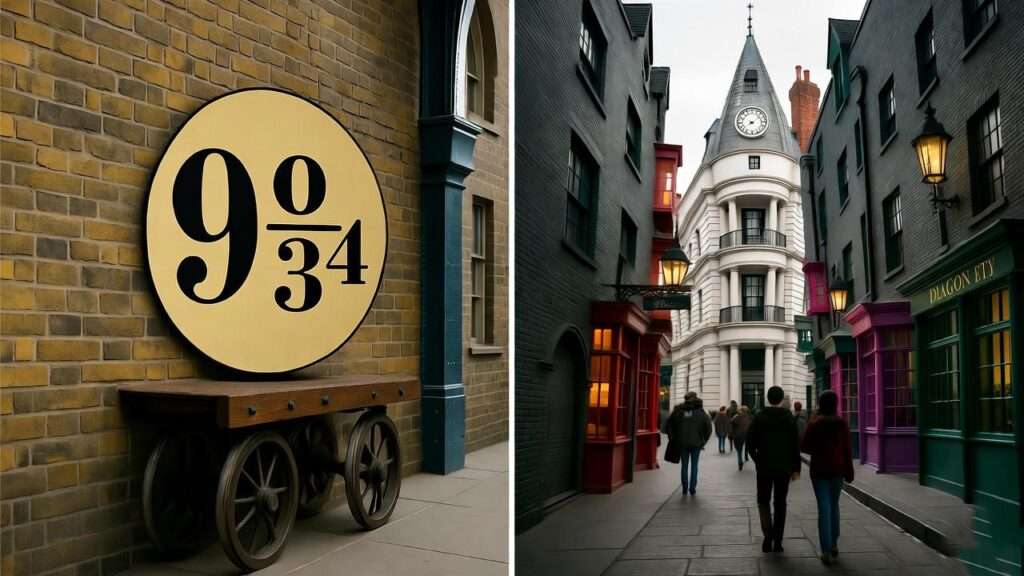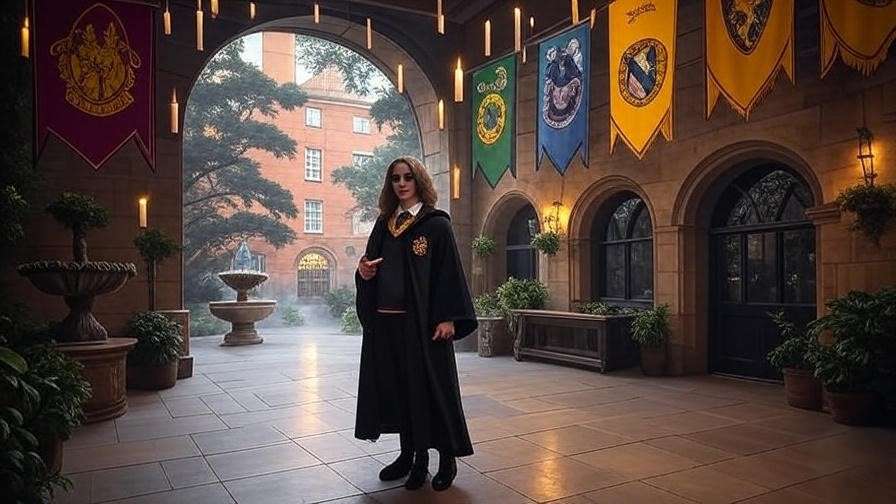Imagine the heart-pounding moment when Harry Potter and Ron Weasley, racing to catch the Hogwarts Express, slam into the enchanted wall at Platform 9¾, only to find it sealed shut by mischievous magic. This iconic barrier, a literal wall Harry Potter fans adore, isn’t just a physical obstacle—it’s a gateway to the wizarding world, dripping with mystery and meaning. Walls in J.K. Rowling’s universe are more than stone and mortar; they’re symbols of secrecy, protection, and transformation. For fans craving deeper insights into Hogwarts’ hidden barriers, this article unveils their magical mechanics, symbolic significance, and real-world allure. Drawing from Rowling’s books, Wizarding World archives, and fan discussions, we’ll explore why these walls captivate readers and how they enrich the Harry Potter experience.
Whether you’re a lifelong Potterhead or a casual fan, this guide promises a comprehensive journey through the walls that define the wizarding world. From Platform 9¾ to the Room of Requirement, we’ll uncover secrets, share practical tips for fans, and reveal how these barriers resonate in both the story and fandom culture. Let’s step through the wall and dive into the magic.
The Magical Significance of Walls in the Harry Potter Universe
Walls as Gateways to Magic
In the Harry Potter series, walls are rarely just walls—they’re portals to wonder. The wall Harry Potter encounters at Platform 9¾, for instance, is a magical threshold separating the mundane Muggle world from the enchanting realm of Hogwarts. Located at King’s Cross Station, this barrier requires witches and wizards to walk confidently through what appears to be a solid wall, a test of faith in magic itself. As described in Harry Potter and the Philosopher’s Stone, Harry’s first passage through the barrier is a moment of awe, marking his transition from an ordinary life to one of extraordinary possibility.
Similarly, the brick wall behind the Leaky Cauldron, tapped in a specific sequence to reveal Diagon Alley, serves as another magical gateway. This wall, introduced in Philosopher’s Stone, hides the bustling wizarding marketplace from Muggle eyes, embodying the theme of a hidden world. Its enchantment, likely a charm tied to precise wand movements, underscores the exclusivity of the wizarding community. These walls aren’t just physical; they’re narrative devices that introduce readers to the magic that lies beyond the ordinary.
Symbolism of Barriers
Beyond their practical function, walls in Harry Potter carry profound symbolic weight. They represent challenges to overcome, secrets to uncover, and transformations to embrace. The Platform 9¾ barrier, for example, symbolizes the leap of faith required to embrace one’s magical identity. In Chamber of Secrets, when Dobby seals the barrier, it reflects Harry and Ron’s struggle to return to Hogwarts, mirroring broader themes of exclusion and perseverance.
The Room of Requirement’s hidden wall, which appears only when needed, embodies adaptability and hope, particularly in Order of the Phoenix when Dumbledore’s Army uses it to resist oppression. Literary scholar Dr. Beatrice Groves, in her book Literary Allusion in Harry Potter, notes that walls often symbolize “the boundary between the known and the unknown,” a concept Rowling weaves throughout the series. Whether it’s the Chamber of Secrets’ serpentine wall or Hogwarts’ fortified boundaries, these barriers highlight the tension between safety and danger, secrecy and revelation.
Iconic Walls in the Harry Potter Series
Platform 9¾: The Gateway to Hogwarts
The Platform 9¾ barrier is arguably the most iconic wall Harry Potter fans encounter. Nestled between platforms 9 and 10 at King’s Cross Station, this enchanted wall is a rite of passage for Hogwarts students. In Philosopher’s Stone, Harry, guided by Molly Weasley, learns to walk through it with confidence, a moment that captures the thrill of entering the wizarding world. The barrier’s magic, likely a blend of Muggle-repelling charms and spatial enchantments, ensures only those with magical intent can pass.
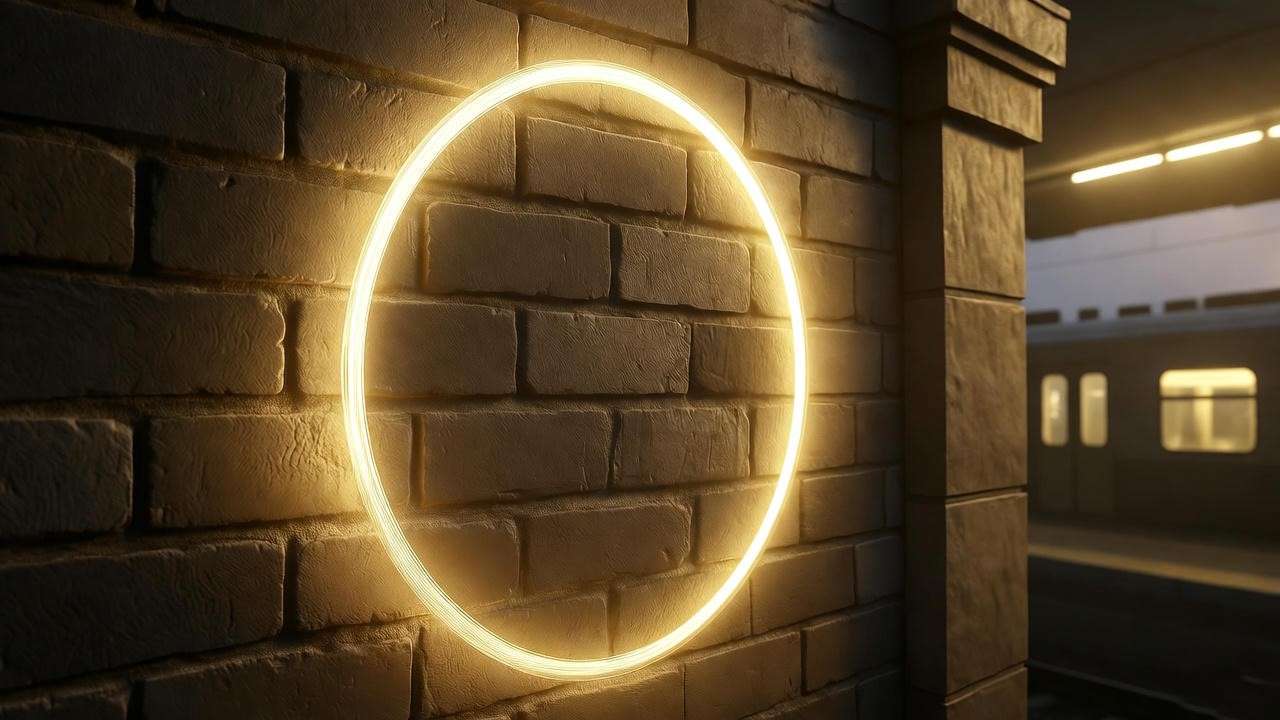
In Chamber of Secrets, the wall’s sealing by Dobby adds drama, forcing Harry and Ron to resort to the flying Ford Anglia. This incident highlights the barrier’s dual nature: a gateway when open, a blockade when closed. For fans, Platform 9¾ is a cultural touchstone. Visiting King’s Cross Station, where a trolley embedded in the wall marks the spot, is a must for Potterheads. Tip: Arrive early to avoid crowds at the Platform 9¾ photo op, and check out the nearby Harry Potter Shop for themed souvenirs.
The Leaky Cauldron and Diagon Alley Entrance
Another unforgettable wall is the enchanted brick barrier behind the Leaky Cauldron, which opens to Diagon Alley. In Philosopher’s Stone, Hagrid taps specific bricks to reveal the bustling wizarding street, a moment that introduces Harry—and readers—to the heart of magical commerce. This wall’s magic lies in its simplicity: a sequence of taps, likely tied to a charm like Alohomora or a custom spell, transforms it into a portal. Its role in concealing Diagon Alley reflects the wizarding world’s need for secrecy, a recurring theme in Rowling’s work.
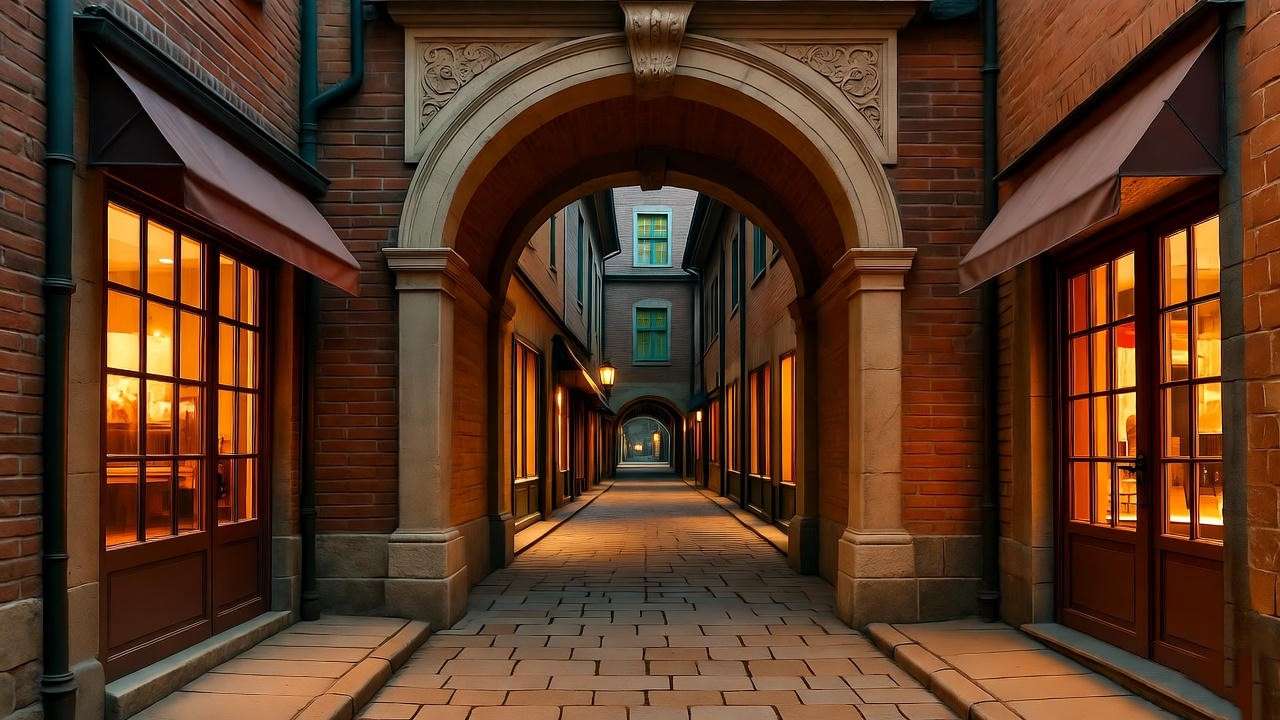
The wall’s significance extends beyond function. It symbolizes the transition from the mundane (the Leaky Cauldron’s grubby exterior) to the magical (Diagon Alley’s vibrant shops). For fans, this wall is a reminder of the wonder of discovery, much like Harry’s awe at seeing Ollivanders or Flourish and Blotts for the first time.
The Room of Requirement’s Hidden Wall
The Room of Requirement, introduced in Goblet of Fire and expanded in Order of the Phoenix, is accessed through a blank wall that transforms when someone with a genuine need walks past it three times. This wall’s magic is unique: it responds to intention, creating a space tailored to the user’s needs, from Dumbledore’s Army’s training ground to a hiding place for Draco Malfoy in Half-Blood Prince. Its adaptability makes it one of Hogwarts’ most fascinating features.
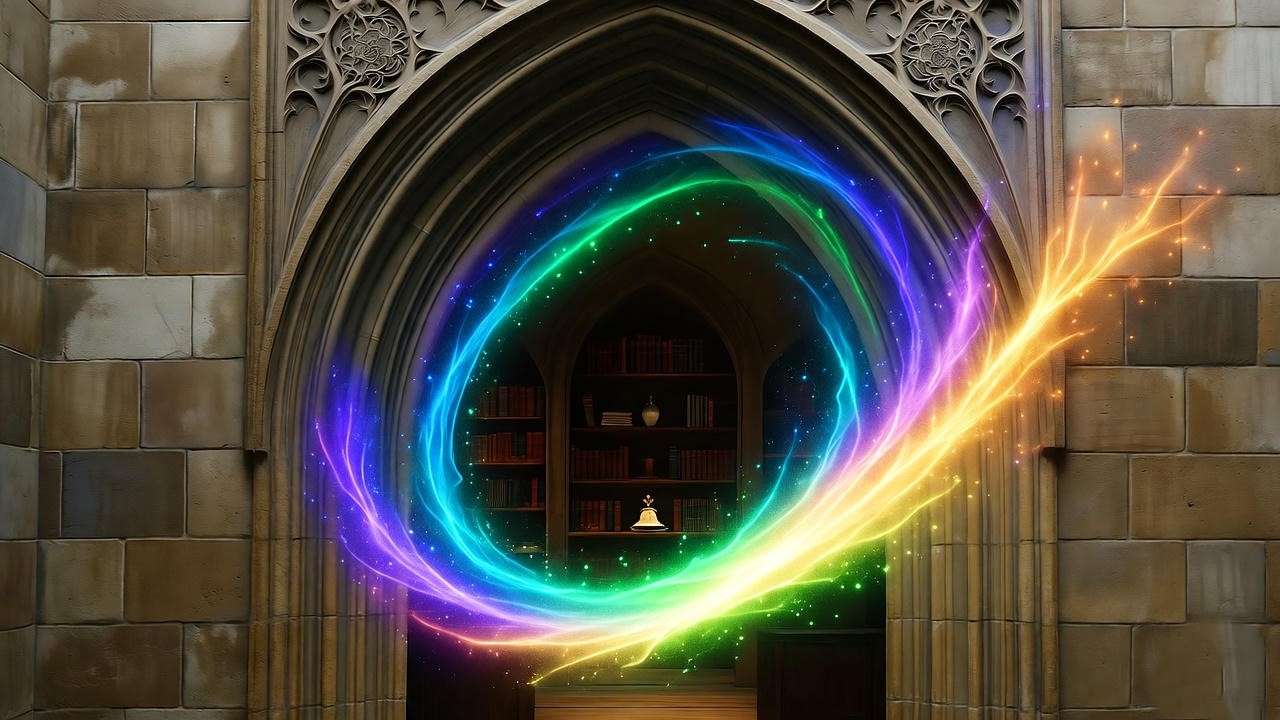
In Deathly Hallows, the wall’s role in concealing the Room of Requirement becomes critical as Harry searches for the diadem. The wall’s ability to appear and disappear underscores the series’ theme of magic responding to human need. As Pottermore notes, the Room’s enchantments are likely tied to ancient magic, possibly predating Hogwarts itself. For fans, this wall is a symbol of resilience and resourcefulness, inspiring countless fan theories about its origins.
The Chamber of Secrets’ Entrance
Deep within Hogwarts lies the serpentine wall that guards the Chamber of Secrets, accessible only to Parselmouths. Introduced in Chamber of Secrets, this wall, hidden in Moaning Myrtle’s bathroom, features intricate snake carvings and opens with a hissed command in Parseltongue. Its design reflects Salazar Slytherin’s legacy, emphasizing secrecy and exclusivity. The wall’s magical properties, likely tied to ancient Slytherin enchantments, make it one of the series’ most foreboding barriers.
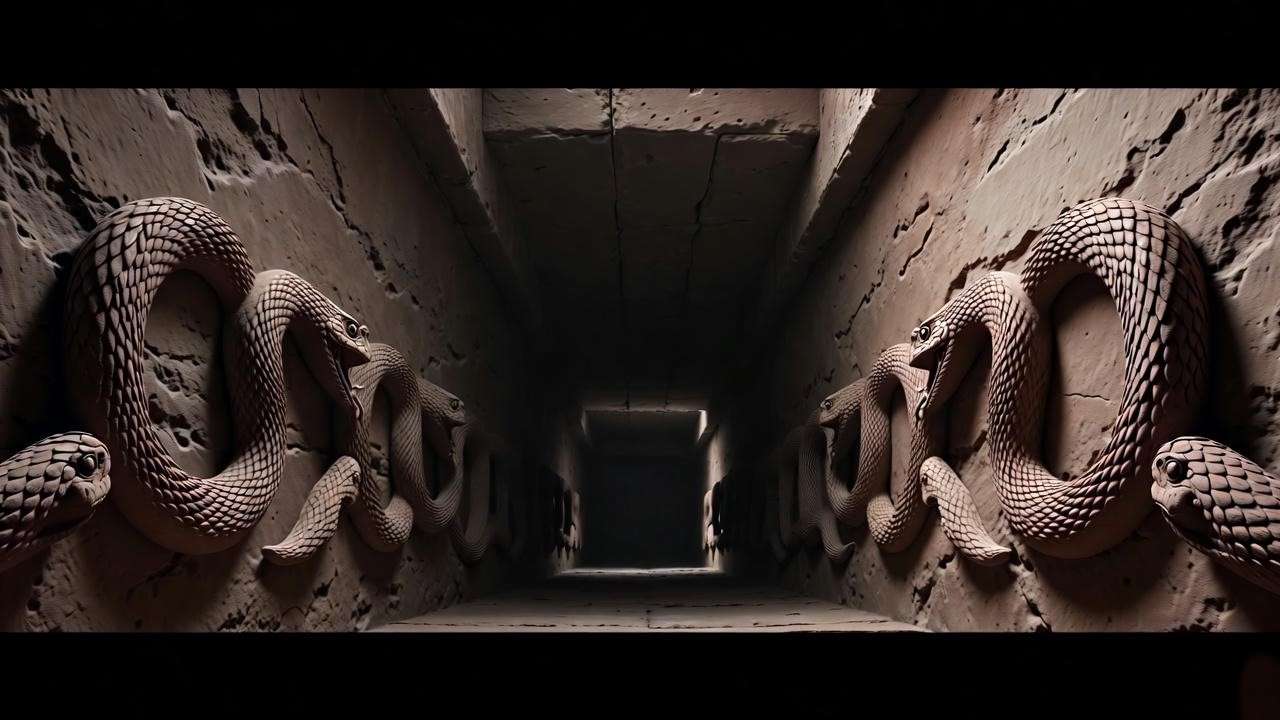
The Chamber’s wall is more than a plot device; it symbolizes the dangers of hidden knowledge and the consequences of prejudice. Harry’s ability to open it, despite not being a Slytherin, underscores his complex connection to Voldemort. For fans, this wall is a chilling reminder of the dark secrets lurking within Hogwarts’ walls.
The Magic Behind Hogwarts’ Walls
Enchantments and Protective Spells
Hogwarts’ walls are more than architectural marvels—they’re fortified with powerful enchantments. As described in Goblet of Fire, the castle is protected by anti-Muggle charms, ensuring it appears as a ruin to non-magical visitors. These spells, likely woven into the stone during the castle’s founding, make Hogwarts an impregnable fortress. During the Battle of Hogwarts in Deathly Hallows, the walls withstand significant magical assaults, showcasing their resilience.
The enchantments extend beyond defense. Moving staircases and hidden passages, as seen in Philosopher’s Stone, suggest a dynamic magical architecture. Pottermore reveals that Hogwarts’ walls are imbued with spells that allow them to shift and adapt, reflecting the castle’s almost sentient nature. This magical infrastructure underscores Hogwarts’ role as a sanctuary for young witches and wizards.
Architectural Symbolism
Hogwarts’ walls are steeped in history, drawing inspiration from medieval British castles and boarding schools. Rowling, in a 2001 interview with The Herald, described Hogwarts as a blend of real-world architecture and magical whimsy. The castle’s shifting walls, secret passages, and grand halls mirror the complexity of its inhabitants’ journeys. For example, the Great Hall’s towering walls symbolize unity, while hidden passages like the one behind the one-eyed witch statue represent rebellion and discovery.
Literary historian Dr. John Granger argues that Hogwarts’ architecture reflects Rowling’s use of Gothic tropes, where buildings embody the story’s emotional landscape. The walls’ ability to conceal and reveal secrets mirrors the series’ narrative structure, keeping readers guessing until the final reveal.
Lesser-Known Walls and Their Secrets
The Vanishing Cabinet’s Wall Connection
In Half-Blood Prince, the Vanishing Cabinet, hidden within a Hogwarts wall, becomes a pivotal plot device. Draco Malfoy uses it to create a passage for Death Eaters, breaching Hogwarts’ defenses. The wall housing the cabinet, located in a forgotten corridor, underscores the theme of overlooked dangers. Its magical mechanics, tied to the cabinet’s twinning with Borgin and Burkes, highlight the vulnerability of even the most fortified barriers.
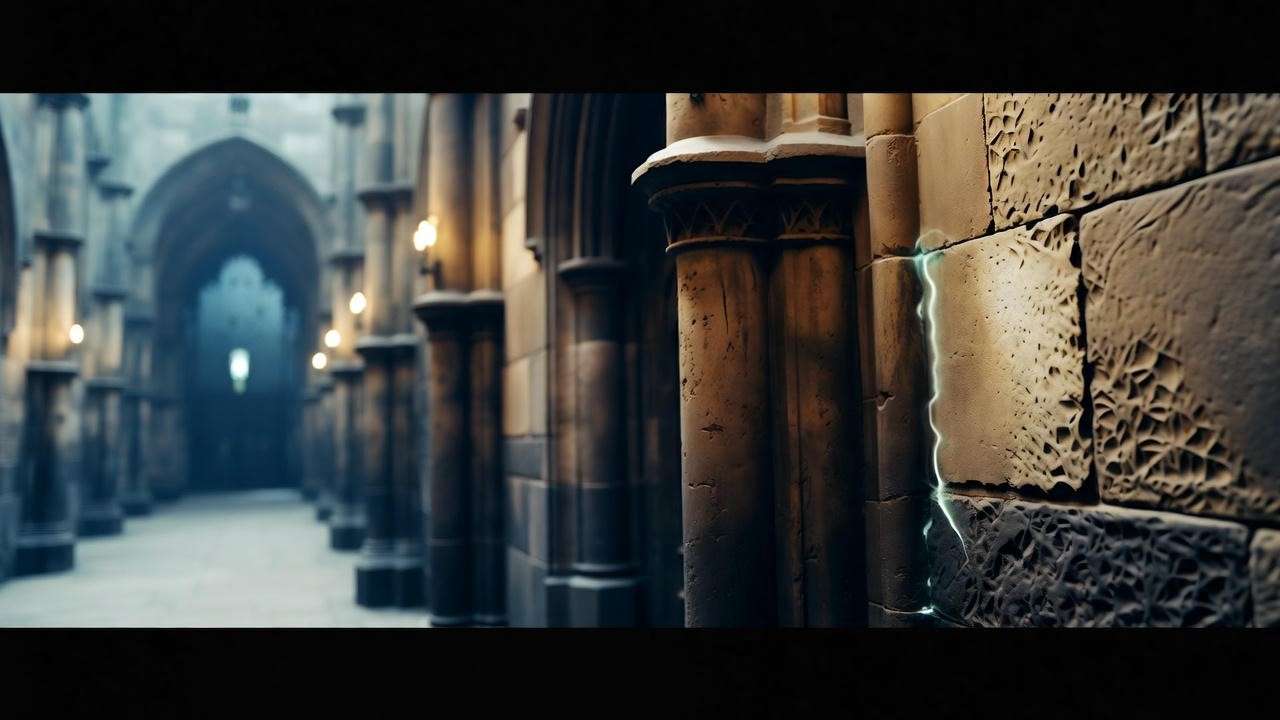
This wall’s significance lies in its narrative impact. By allowing Death Eaters into Hogwarts, it shatters the illusion of the castle’s invincibility, setting the stage for the series’ climactic battles. Fans on X have speculated about other hidden passages linked to the cabinet, adding to its mystique.
The Mirror of Erised’s Wall
The Mirror of Erised, introduced in Philosopher’s Stone, is concealed within a wall in an unused classroom, its placement emphasizing its secretive nature. The wall’s role in hiding the mirror reflects the theme of concealed desires, as Harry discovers his deepest longing reflected in its surface. The mirror’s enchantment, likely tied to ancient magic, makes the wall a symbolic barrier between reality and fantasy.
For fans, the Mirror of Erised’s wall is a poignant reminder of the series’ emotional depth. Its hidden location invites speculation about other secrets tucked within Hogwarts’ walls, a topic frequently explored in fanfiction on platforms like Archive of Our Own.
Fan Theories on Hidden Walls
The Harry Potter fandom is rife with theories about undiscovered walls in Hogwarts. Posts on Reddit’s r/harrypotter suggest unexplored Slytherin chambers or secret passages linked to the Founders. One popular theory posits a hidden wall in the Slytherin common room, potentially leading to artifacts tied to Salazar Slytherin’s legacy. While unconfirmed by Rowling, these theories reflect fans’ fascination with Hogwarts’ mysteries.
Wizarding World’s forums also discuss the possibility of walls concealing time-based magic, inspired by the Time Room in Order of the Phoenix. These fan-driven discussions highlight the enduring allure of Hogwarts’ hidden barriers, encouraging readers to re-examine the series for clues.
The Cultural and Fandom Impact of Harry Potter’s Walls
Walls in Fan Experiences
The walls of the Harry Potter universe have transcended the page to become cultural landmarks for fans worldwide. The Platform 9¾ barrier at King’s Cross Station, with its famous half-embedded trolley, is a pilgrimage site for Potterheads. Visitors flock to London to snap photos and immerse themselves in the magic of Harry’s first journey to Hogwarts. The nearby Harry Potter Shop, stocked with wands, house scarves, and themed souvenirs, enhances the experience, making the wall a tangible link to the wizarding world.
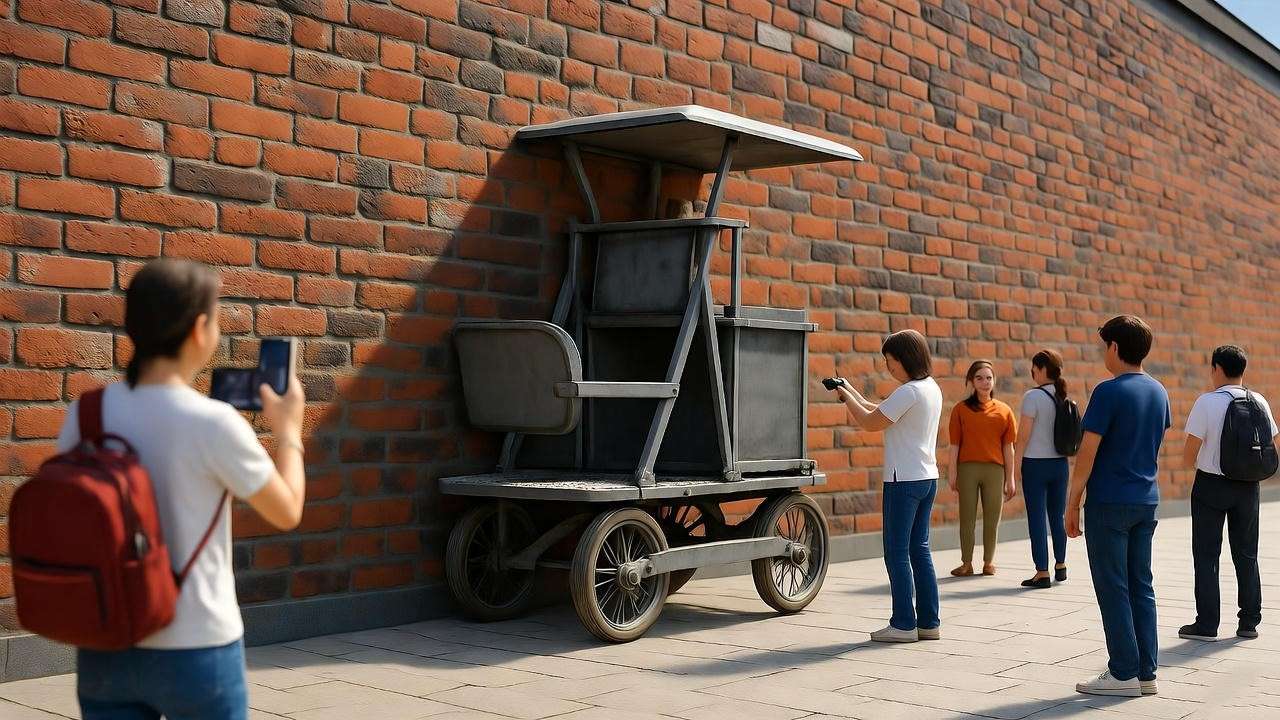
Beyond King’s Cross, walls like the Diagon Alley entrance inspire real-world recreations. The Warner Bros. Studio Tour London features a replica of the Leaky Cauldron’s brick wall, where fans can tap bricks to “open” the alley. These experiences bring the magic of Hogwarts’ hidden barriers to life, fostering a sense of connection among fans. Tip: Book Studio Tour tickets in advance online to secure a spot, and arrive early to explore the Diagon Alley set without crowds.
Walls in Harry Potter Merchandise and Media
The iconic walls of Harry Potter have left a significant mark on merchandise and media. LEGO Hogwarts sets, for instance, meticulously recreate the castle’s walls, complete with moving staircases and hidden passages. The LEGO Diagon Alley set includes the brick wall entrance, allowing fans to rebuild the magical moment when Hagrid introduces Harry to the wizarding world. Video games like Hogwarts Legacy also feature interactive walls, such as secret passages players can uncover using spells like Revelio.
In the Harry Potter films, the visual depiction of walls enhances their mystique. The Room of Requirement’s wall, with its subtle shimmer as it transforms, is a fan-favorite moment in Order of the Phoenix. These adaptations amplify the walls’ allure, making them central to the franchise’s visual identity. For collectors, merchandise like Platform 9¾ replicas or Diagon Alley posters offers a way to bring these barriers into their homes.
Symbolism in Fan Art and Fiction
Harry Potter’s walls inspire creativity within the fandom. Fan art on platforms like DeviantArt and Instagram often depicts the Platform 9¾ barrier or the Room of Requirement’s wall, capturing their emotional resonance. Artists portray these walls as portals to hope, adventure, or secrecy, reflecting their narrative significance. For example, a popular piece on Instagram shows Harry and Ron standing before a glowing Platform 9¾, symbolizing their leap into the unknown.
Fanfiction also explores the walls’ mysteries. Stories on Archive of Our Own imagine hidden chambers behind Hogwarts’ walls, with authors creating elaborate backstories for undiscovered passages. These works highlight fans’ desire to expand Rowling’s world, using walls as a canvas for new adventures. The fandom’s engagement with these barriers underscores their enduring appeal, bridging the gap between Rowling’s canon and fan-driven creativity.
Practical Takeaways for Harry Potter Fans
How to Incorporate Wall Magic into Your Life
For fans eager to bring the magic of Harry Potter’s walls into their everyday lives, there are creative and accessible ways to do so. Consider crafting a “Platform 9¾” wall in your home as a tribute to the series. Using removable wallpaper or decals, you can recreate the iconic brick barrier, complete with a trolley graphic for authenticity. Pinterest offers countless DIY tutorials for Harry Potter-themed decor, including step-by-step guides for wall art inspired by Diagon Alley or the Room of Requirement.
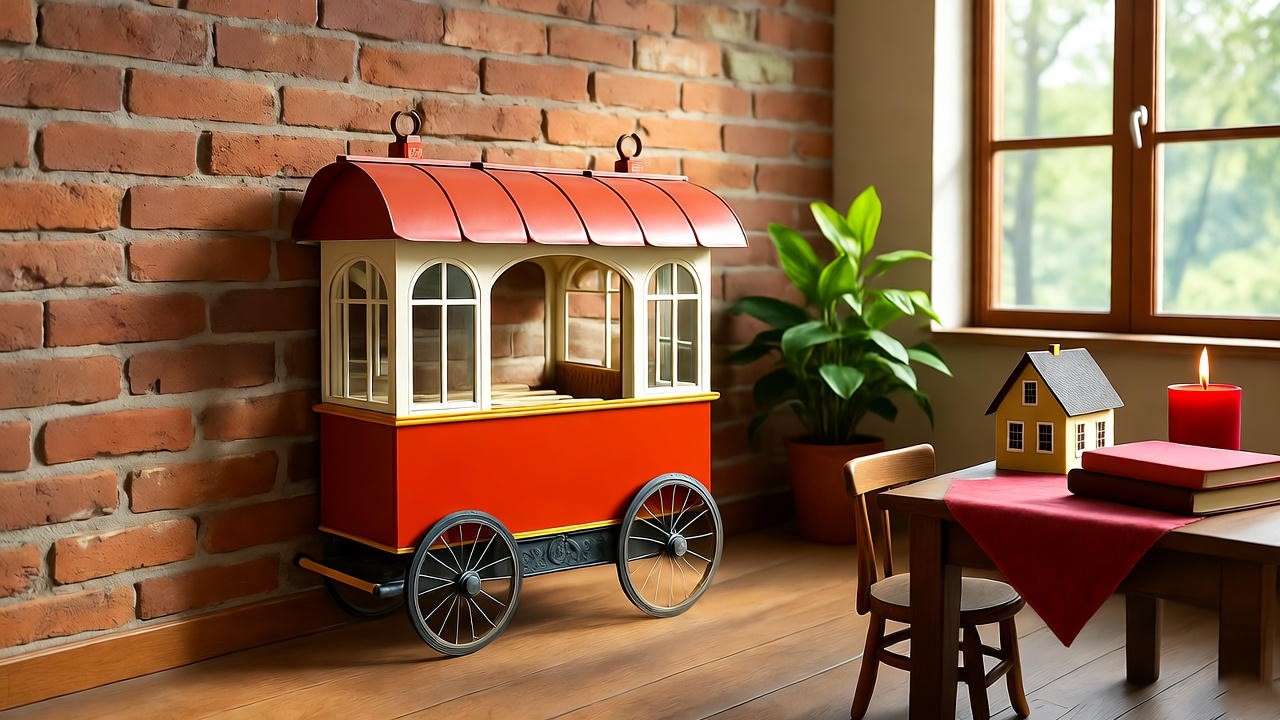
Another idea is to design a “Room of Requirement” space in your home—a cozy nook that adapts to your needs, whether for reading, crafting, or meditation. Add subtle nods to Hogwarts, like a tapestry or candles, to evoke the wall’s magical transformation. Tip: Check out Etsy for Harry Potter-inspired wall decals or stencils to simplify your project, ensuring a professional look without breaking the bank.
Visiting Harry Potter Wall Locations
For fans planning to visit real-world locations tied to Harry Potter’s walls, preparation is key. King’s Cross Station in London is a must-visit, with the Platform 9¾ trolley open daily for photos. The site is free, but expect queues during peak tourist seasons. The adjacent Harry Potter Shop offers exclusive merchandise, from wands to Hogwarts house badges. Tip: Visit early in the morning or late afternoon to avoid crowds, and check the official King’s Cross website for any event-related closures.
The Warner Bros. Studio Tour London, located in Leavesden, is another essential stop. The Diagon Alley set, complete with the Leaky Cauldron’s brick wall, is a highlight, allowing fans to step into the wizarding world. Tickets typically cost £50–60, with discounts for children. Booking online at least two months in advance is recommended, as slots fill quickly. For international fans, Universal Studios’ Wizarding World of Harry Potter in Orlando or Japan features Diagon Alley replicas, including interactive walls that respond to wand movements.
Exploring Walls in Harry Potter Games
Video games offer an immersive way to interact with Harry Potter’s walls. Hogwarts Legacy, an open-world RPG, lets players explore Hogwarts’ corridors, uncovering hidden passages and secret walls using spells like Lumos or Revelio. The game’s Room of Requirement serves as a customizable hub, with its wall transforming based on player choices. Tip: To find hidden walls in Hogwarts Legacy, pay attention to environmental clues like flickering torches or misaligned bricks, which often signal secret passages.
Other games, like Harry Potter: Wizards Unite (now discontinued) or LEGO Harry Potter: Years 1–7, also feature iconic walls, from Platform 9¾ to the Chamber of Secrets. These games allow fans to engage with the series’ barriers in a hands-on way, deepening their connection to the wizarding world. For mobile gamers, check out Harry Potter: Magic Awakened, which includes wall-based challenges inspired by Hogwarts’ architecture.
FAQs About Walls in Harry Potter
How Does the Platform 9¾ Barrier Work Magically?
The Platform 9¾ barrier is enchanted with Muggle-repelling charms, ensuring only those with magical intent can pass through. As described in Philosopher’s Stone, the wall appears solid to Muggles but becomes permeable when approached with confidence. Pottermore suggests the charm is tied to the Ministry of Magic’s oversight, maintaining the wizarding world’s secrecy. The barrier’s magic likely involves spatial manipulation, creating a pocket dimension between platforms 9 and 10.
Are There Other Hidden Walls in Hogwarts We Don’t Know About?
While Rowling hasn’t confirmed additional hidden walls, fan theories abound. Reddit’s r/harrypotter community speculates about undiscovered passages in the Slytherin common room, possibly linked to Salazar Slytherin’s secrets. The Room of Requirement’s adaptability suggests other walls could conceal similar spaces, a possibility hinted at in Deathly Hallows when the room changes forms. Until Rowling reveals more, these mysteries fuel fan imagination.
Why Are Walls So Prominent in Harry Potter’s World?
Walls in Harry Potter symbolize the divide between the magical and mundane, as well as the challenges characters face. They reflect themes of secrecy (Diagon Alley), protection (Hogwarts’ fortifications), and discovery (Room of Requirement). Dr. Beatrice Groves notes that Rowling uses walls to mirror the characters’ internal struggles, making them integral to the series’ emotional and narrative depth.
Can Muggles Ever Access These Magical Walls?
Muggles typically cannot access magical walls due to protective enchantments. However, exceptions exist, such as Hermione’s parents entering Diagon Alley in Chamber of Secrets, likely accompanied by a witch or wizard. The Platform 9¾ barrier repels Muggles instinctively, but Rowling has suggested that Muggle parents of magical children may be guided through under special circumstances.
The walls of the Harry Potter universe—Platform 9¾, the Diagon Alley entrance, the Room of Requirement, and beyond—are more than architectural features. They’re gateways to magic, symbols of transformation, and touchstones for fans worldwide. From their enchanted mechanics to their narrative significance, these barriers weave a rich tapestry of secrecy, resilience, and discovery. By exploring their secrets, visiting their real-world counterparts, or incorporating their magic into your life, you can deepen your connection to J.K. Rowling’s world.
Revisit the books or films to spot these walls in action, share your favorite wall-related moments in the comments, or plan a trip to King’s Cross or the Warner Bros. Studio Tour. For more Harry Potter insights, check out our related articles on Hogwarts architecture or magical objects. Which wall inspires you the most? Let’s keep the magic alive.

